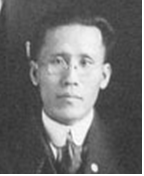Yak San (pen name) Baek Il-gyu immigrated with the aim of studying in the United States. He arrived in Hawaii in May 1905 and moved to San Francisco in August of the following year. In March 1907, he was one of the initiators in the establishment of the Daedong Bogukhoe (Great Eastern Patriotic Society) in San Francisco. In March 1908, he served as the chairman of the support committee for Jang In-hwan and Jeon Myeong-woon, the two righteous men involved in the Stevens incident. In July 1909, he established the Korean Boy Soldiers School in Nebraska with Park Yong-man. In 1918, he completed his studies in economics at the University of California and received a Bachelor of Arts degree.
As the editor-in-chief of Daedong Gongbo (Great Eastern Public Newspaper), he was appointed as the editor-in-chief of the Shinhan Minbo (New Korea Newspaper), the organ of the Korean National Association of North America, in August 1918. For 16 years thereafter, he carried out anti-Japanese independence movements through the newspaper. In April 1919, he was elected as the President of the Central General Assembly of the Korean National Association, and he commanded the independence movements of Koreans in the mainland United States, Hawaii, and Mexico. In February 1920, he published “An Economic History of Korea,” and in February 1926, he was elected as the President of the Korean National Association of North America, serving for eight years.
From 1934, he served as a finance committee member of the third administrative office of the Provisional Government of the Republic of Korea in the United States, raising military funds to support the Provisional Government. In 1943, he served as the president and general manager of “Independence,” the organ of the Korean National Revolutionary Party’s American branch. After liberation in 1946, he served as the editor-in-chief of “Kookminbo” (National Newspaper) of the Korean National Association of Hawaii for two years. His remains, which were in a cemetery in Los Angeles, were moved to the Daejeon National Cemetery in September 2002. The government posthumously awarded him the Order of Merit for National Foundation, Independence Medal, in 1997.

Leave a Reply